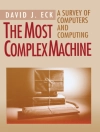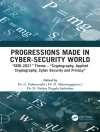This Springer Brief presents the
data- information-and-time (
DIT) model that precisely clarifies the semantics behind the terms
data, information and their relations to the
passage of real time. According to the DIT model a data item is a symbol that appears as a pattern (e.g., visual, sound, gesture, or any bit pattern) in physical space. It is generated by a human or a machine in the current contextual situation and is linked to a concept in the human mind or a set of operations of a machine. An information item delivers the sense or the idea that a human mind extracts out of a given natural language proposition that contains meaningful data items. Since the given tangible, intangible and temporal context are part of the explanation of a data item, a change of context can have an effect on the meaning of data and the sense of a proposition.
The DIT model provides a framework to show how the flow of time can change the truth-value of a proposition. This book compares our notions of data, information, and time in differing contexts: in human communication, in the operation of a computer system and in a biological system. In the final Section a few simple examples demonstrate how the lessons learned from the DIT-model can help to improve the design of a computer system.
Table of Content
1. Introduction.- 2. Overview of the DIT Model.- 3. Fundamental Terms.- 4. Context.- 5. Language and Information.- 6. Data in Communication.- 7. Data in Archival Systems.- 8. Data in Real-Time Control Systems.- 9. Data in Biological Systems.- 10. Generation and Explanation of Data.- 11. Consequences for System Design.- 12. Conclusions.
About the author
Hermann Kopetz received his Ph D in physics ‘sub auspiciis praesidentis’ from the University of Vienna, Austria in 1968. After eight years in Industry he accepted in 1978 an appointment as a Professor for Computer Process Control at the Technical University of West-Berlin, moving to the Technical University of Vienna in 1992. Kopetz is a full member of the Austrian Academy of Science, Fellow of the IEEE, and was a member of the Information Society Advisory Group (ISTAG), advising the European Commission in Brussels in the domain of information technology from 2008 to 2012. In June 2007 he received the honorary degree of Dr. honoris causa from the University Paul Sabatier in Toulouse, France. Kopetz is the chief architect of the time-triggered technology for dependable embedded Systems and a co-founder of the company TTTech. He is the author of Real-Time Systems: Design Principles for Distributed Embedded Applications (Springer) and several other books.












